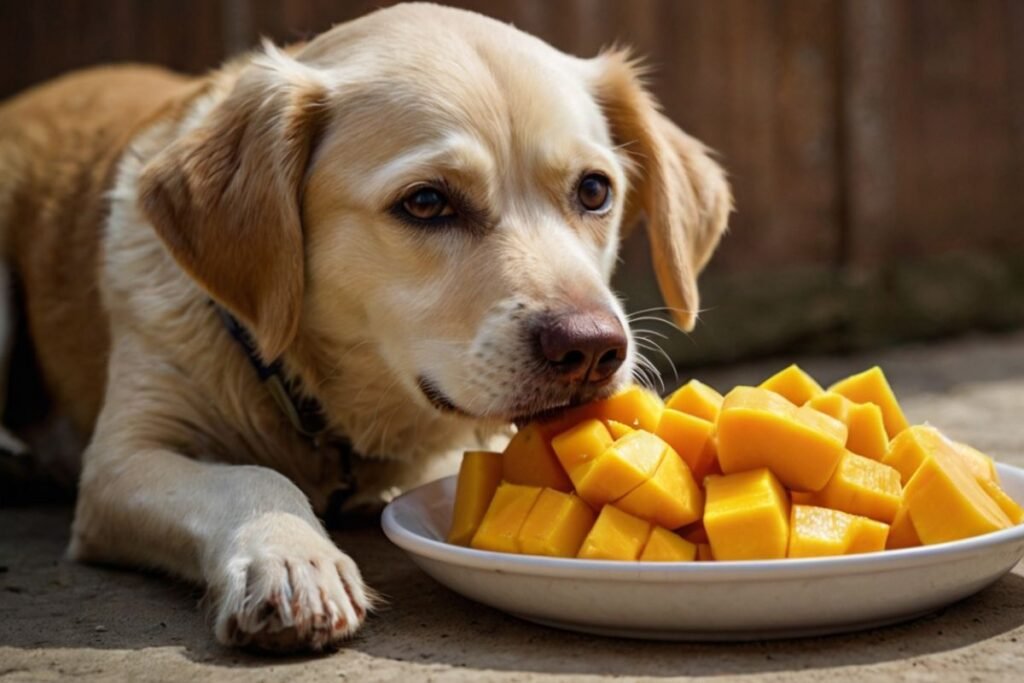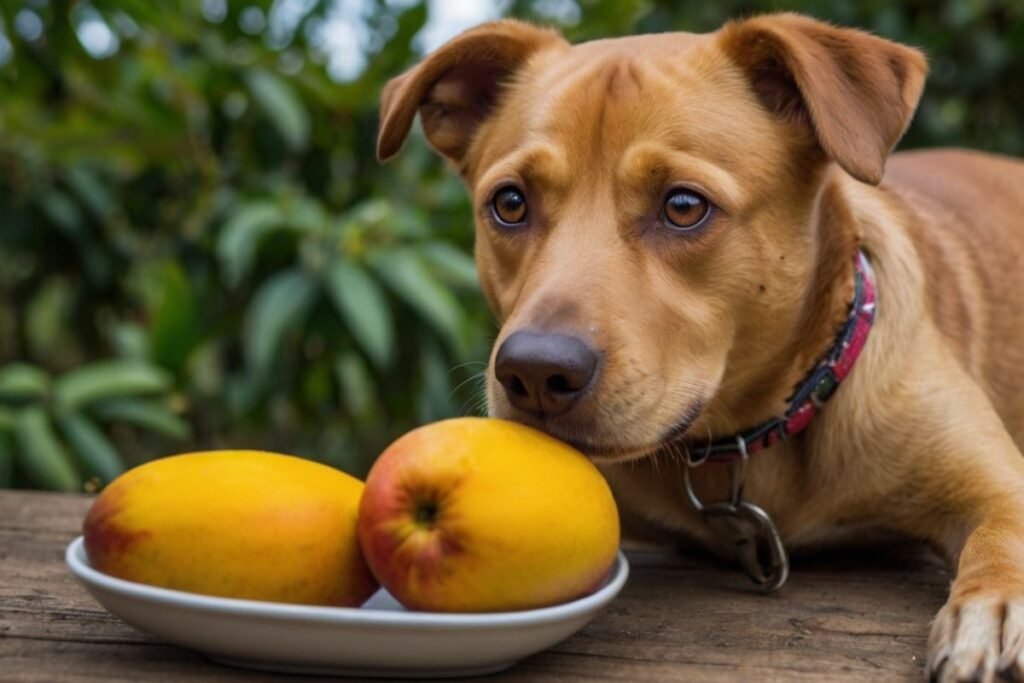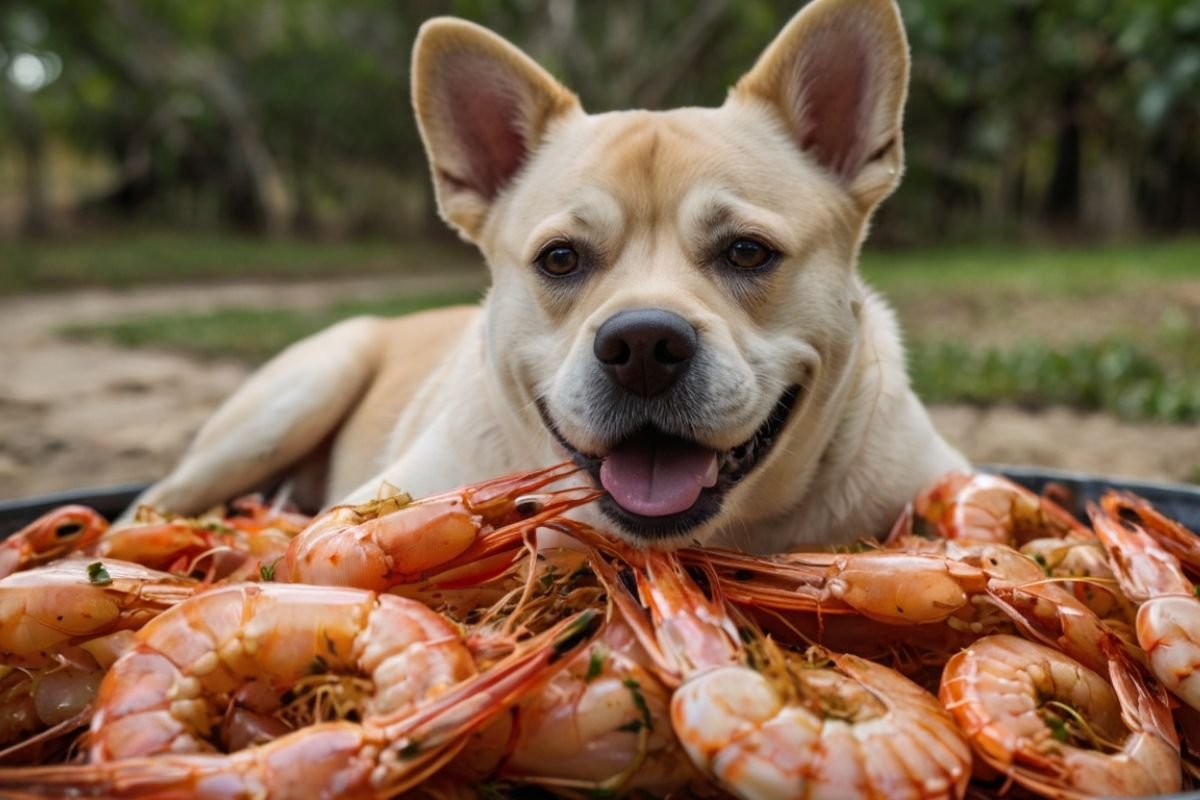I see you there, mango in hand, looking down at those sweet puppy eyes. Trust me, I’ve been exactly where you are right now. My golden retriever has this way of tilting her head that makes me want to share everything I eat with her. But then my protective parent instincts kick in, and I start worrying.
You know what I mean, right? We love our dogs like they’re our actual children. Sometimes I think I worry about my pup more than my human friends worry about their kids! Every treat becomes a decision. Every new food feels like a risk. And honestly? That’s exactly how it should be.
So let’s sit down together and talk about mango. I’ve done the research, talked to vets, and yes, made some mistakes along the way. I want to share everything I’ve learned so you can feel confident about this decision.

Table of Contents
The Answer You’re Looking For
Here’s what you really want to know: Yes, your dog can eat mango! I felt such relief when I first learned this. Finally, something sweet and delicious that I could actually share with my furry baby.
But hold on. Before you start cutting up that mango, there’s more we need to talk about. Because loving our dogs means being smart about how we treat them. The mango flesh is wonderful for dogs. The pit and skin? Not so much. We’ll get into all of that.
I remember the first time I gave my dog mango. She looked at me like I’d just handed her the greatest gift in the world. Her tail went crazy, and she did that little happy dance she does when she’s excited. It was one of those perfect moments that remind us why we love being dog parents.
Also read, Can Dogs Eat Cucumbers?
Why I Fell in Love with Mango for Dogs
Let me tell you why mango became one of my go-to treats for my pup. This fruit is like nature’s multivitamin packed into something that tastes like candy.
First, there’s vitamin C. Now, I know dogs make their own vitamin C, but extra never hurts. Think of it like giving your dog a little immune system hug. During flu season, I feel better knowing Luna’s getting that extra boost.
Then there’s vitamin A. You’ve probably heard it’s good for eyes, but did you know it also helps keep your dog’s coat shiny? My dog’s fur has never looked better since we started our mango routine. People actually ask me what I’m feeding her!
The fiber in mango helps with digestion too. My pup used to have some tummy troubles, especially when she got into things she shouldn’t have. The gentle fiber in mango seems to help keep everything moving smoothly, if you know what I mean.
And here’s something I love: mango is mostly water. During those brutal summer days when I’m worried about my dog overheating, a few frozen mango pieces help keep her hydrated while giving her something special to enjoy.
The Scary Stuff We Need to Talk About
I wish I could tell you mango is 100% safe with no worries at all. But I care about you and your dog too much to sugarcoat things. There are real risks we need to discuss.
The pit is dangerous. Really dangerous. I’m talking about possible poisoning, choking, or intestinal blockage. These aren’t just theoretical risks – they’re real emergencies that happen to real dogs with real families who love them.
I learned this the hard way when my neighbor’s dog got hold of a whole mango. Thank goodness everything turned out okay, but that emergency vet visit cost them $3,000 and scared them to death. Don’t let that be you.
The skin is another issue. While it won’t poison your dog, it’s tough to digest. Luna threw up the one time she managed to sneak some mango skin. It was awful watching her feel sick, especially knowing I could have prevented it.
Some dogs are allergic to mango too. The first time you offer it, start tiny. I mean really tiny – like the size of your pinky nail. Watch for itching, swelling, or tummy upset. Your dog’s safety is worth being extra cautious.
How I Prepare Mango for Luna
Let me walk you through exactly how I prepare mango for Luna. I’ve gotten this down to a science after months of practice.
I start by picking a good mango. It should give slightly when I press it, but not be mushy. Too ripe can upset sensitive tummies. I learned this when Luna got loose bowels from an overripe mango I thought was fine.
I wash it thoroughly, even though I’m removing the skin. You never know what’s been on that surface. Then I peel it completely. Every bit of skin has to go. I use a sharp knife and take my time. Rushing leads to mistakes, and mistakes can hurt our dogs.
Removing the pit is crucial. I cut around it carefully, making sure I get every bit. Then I cut the flesh into small pieces. For Luna, who’s about 65 pounds, I make pieces about the size of a grape. Smaller dogs need smaller pieces.
I always double-check each piece. Sometimes little bits of pit cling to the flesh. I’d rather throw away good mango than risk Luna’s safety.
How Much Should You Give?

This is where I see a lot of dog parents mess up. Just because something is safe doesn’t mean unlimited amounts are okay. I think of mango like dessert for Luna – a special treat, not a meal.
For small dogs under 20 pounds, I’d suggest 1-2 tiny pieces. We’re talking about pieces the size of a pea or smaller. These little guys can get upset tummies easily.
Medium dogs like beagles or cocker spaniels can handle 2-4 small pieces. Think grape-sized, not cherry tomato-sized. I always err on the side of caution.
Large dogs like Luna can have 4-6 pieces, but I usually stick to 3-4. Even though she could probably handle more, I’d rather see her beg for more than deal with an upset stomach.
I give Luna mango maybe twice a week at most. It’s special because it’s rare. Plus, too much of any good thing can become a problem.
Different Dogs, Different Needs
Not every dog is like Luna. I’ve learned that what works for one dog might not work for another. It’s like how some kids can eat anything while others have sensitive stomachs.
Puppies shouldn’t have mango at all. Their little systems are still figuring out how to handle regular puppy food. Adding new foods just complicates things. Trust me, they’ll have plenty of time for treats when they’re older.
Senior dogs need extra care. Luna’s getting older now, and I’ve noticed she’s more sensitive to new foods than she used to be. I give her smaller pieces and watch her more carefully.
Dogs with diabetes need their human to check with the vet first. The natural sugars in mango can affect blood sugar levels. It’s not worth risking your dog’s health to share a treat.
Overweight dogs should get mango very sparingly, if at all. I know it’s hard to resist those pleading eyes, but keeping our dogs at a healthy weight is one of the most loving things we can do for them.
What to Watch For
I want you to know exactly what to look for if something goes wrong. Early warning signs can make all the difference.
Stomach upset is the most common issue. If your dog vomits, has diarrhea, or seems uncomfortable after eating mango, don’t give it again. Some dogs just can’t handle certain foods, and that’s okay.
Allergic reactions worry me more. Watch for excessive scratching, red bumps, or any swelling. If your dog’s face starts to swell, especially around the eyes or muzzle, get to the vet immediately. This is not a “wait and see” situation.
Changes in behavior can signal problems too. If your normally energetic dog becomes lethargic, or your calm dog becomes restless, pay attention. Dogs can’t tell us when they don’t feel well, so we have to watch for clues.
Any breathing difficulties or excessive drooling needs immediate veterinary attention. Don’t wait. Don’t Google. Just go.
Fun Ways to Share Mango
Once you’re comfortable with basic mango sharing, there are some creative ways to make it extra special for your pup.
I love making frozen mango treats for Luna during summer. I just put prepared mango pieces in ice cube trays and freeze them. She goes absolutely crazy for these on hot days. It’s like giving her doggy ice cream!
Sometimes I mix tiny pieces of mango with her regular food. It makes her everyday meal feel special. The look of surprise and delight on her face is priceless.
I’ve also pureed mango with plain yogurt (making sure it’s xylitol-free) and frozen it in puzzle toys. This gives Luna something to work for and keeps her busy when I need to get things done.
Just remember, any time you’re being creative with treats, the same safety rules apply. No pit, no skin, appropriate portions.
Mistakes I’ve Made (So You Don’t Have To)
Let me share some of my mistakes so you can learn from them instead of making your own.
I once got lazy and didn’t remove all the skin from Luna’s mango pieces. She ate them anyway, and spent the next day with an upset stomach. Lesson learned: there are no shortcuts when it comes to our dogs’ safety.
Another time, I gave her too much mango because she seemed to love it so much. Big mistake. The sugar upset her stomach, and she had loose stools for two days. Now I stick to appropriate portions no matter how much she begs.
I also made the mistake of giving her mango right before bed once. The natural sugars gave her energy when she should have been winding down. She spent half the night wanting to play!
Creating Your Own Mango Routine
Every dog family is different, but here’s what works for us. Maybe it’ll help you create your own system.
I buy organic mangoes when possible. They’re a bit more expensive, but I figure Luna’s worth it. I also try to buy them from local sources when I can find them.
I have a special cutting board that I use only for Luna’s food. This helps prevent cross-contamination from other foods that might not be dog-safe.
I keep a small container in the fridge with prepared mango pieces. I label it with the date so I know when it’s time to throw it out. Fresh is always better for our dogs.
I also keep a little journal of new foods I give Luna. It helps me remember what she likes and how she reacts to different things. If I ever need to talk to the vet, I have all the information right there.
When to Call the Vet
I want you to feel confident about when to seek help. Some things can wait, but others can’t.
Any severe symptoms like difficulty breathing, excessive vomiting, or signs of choking need immediate attention. Don’t hesitate. Emergency vets are there for exactly these situations.
If your dog seems uncomfortable but isn’t in obvious distress, you can probably wait and call your regular vet during business hours. Document what you observe so you can give a clear report.
When in doubt, call. Most vets would rather get a call about nothing than miss something serious. That’s what they’re there for.
My Final Thoughts
Sharing food with our dogs is one of the simple pleasures of being a pet parent. It’s a way of including them in our daily lives and showing them love. Mango can absolutely be part of that joy.
But here’s what I’ve learned after years of loving Luna: the best way to show our dogs love is to prioritize their safety and health over our desire to spoil them. Sometimes love means saying no. Sometimes it means taking extra time to prepare things properly.
Every time I carefully prepare mango for Luna, I’m showing her love. When I stick to appropriate portions even though she’s begging for more, I’m being a good dog parent. When I watch her carefully for any signs of problems, I’m protecting her.
That’s what being a dog parent is all about. We make countless small decisions every day that add up to a lifetime of love and care. Deciding to share mango safely with your dog can be one of those beautiful moments that strengthens your bond.
So go ahead, share that mango with your furry family member. Just do it safely, do it thoughtfully, and do it with all the love in your heart. Your dog will feel that love in every bite, and you’ll have the peace of mind that comes with being a responsible, caring pet parent.
Trust me, those tail wags and happy faces make all the extra care worth it. Here’s to many more sweet moments with our beloved dogs!

Shahriar Robin is the creator of WhatPetsCanEat.com, a passionate pet lover and dedicated cat dad to Rio, a curious two-year-old orange feline who inspired this website. With a love for animals and a knack for research, Shahriar shares trusted, easy-to-understand information to help fellow pet owners make safe, healthy food choices for their furry friends.


